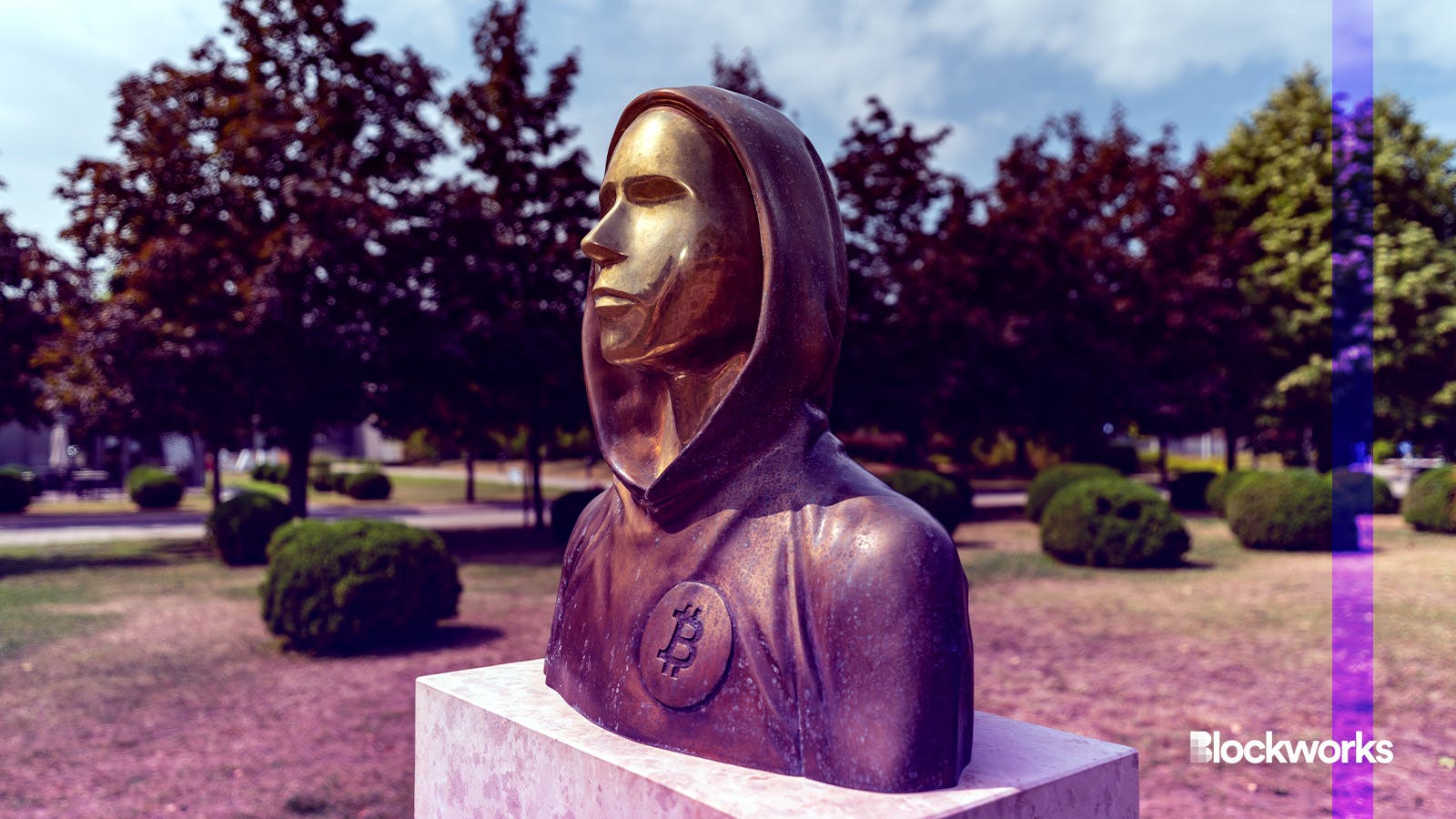Satoshi warned against labeling bitcoin as an ‘investment’
New emails from Satoshi Nakamoto show that the bitcoin creator warned against pushing bitcoin’s anonymous angle

Istvan Csak/Shutterstock modified by Blockworks
New emails from pseudonymous bitcoin creator Satoshi Nakamoto were made public on Friday.
The new emails, released by Martii Malmi, not only add to known bitcoin lore, but give readers more insight into the humble beginnings of bitcoin and how Satoshi worked to launch the network.
He also revealed some personality behind the creator. For example, in November 2009, Satoshi told Malmi, “this is going to be fun!”
At one point, Satoshi even used the word “darn” and referred to Bitcointalk forum member Xunie as a “goofball.” In late November 2009, after Malmi auto generated a logo on CoolText.com, Satoshi shot it down as being “too Disco/web-1990’s.”
Some of the communications stand out — especially in today’s environment — such as the fact that Satoshi didn’t want to label bitcoin as an “investment.”
Read more: 13 years ago, Bitcoin’s pseudonymous creator signed off
“I’m uncomfortable with explicitly saying ‘consider it an investment,’” Satoshi said in June 2009. “That’s a dangerous thing to say and you should delete that bullet point. It’s okay if they come to that conclusion on their own, but we can’t pitch it as that.”
In that same email, Satoshi floated the idea of calling bitcoin a “cryptocurrency.”
“Someone came up with the word ‘cryptocurrency’…maybe it’s a word we should use when describing Bitcoin, do you like it?” he asked.
In 2010, Satoshi expressed concern about pushing the anonymity angle of bitcoin, arguing that users could expose transaction history information, which could therefore expose identities.
Read more: Bitcoin’s ‘genesis’ block of transaction was created 15 years ago
“It’s possible to be pseudonymous, but you have to be careful,” he wrote. If people were to believe that it was anonymous, then the “backlash will be much worse if we haven’t prepared expectations by warning in advance that you have to take precautions if you really want to make [being anonymous] work.”
Satoshi added that “anonymous” also “sounds a bit shady.”
Then, based on the correspondence between Malmi and Satoshi, it looks like Satoshi took a break for a couple of months in 2010. Malmi restarts the email chain commenting that he hadn’t seen Satoshi “in a while.”
Read more: Would the US arrest Satoshi Nakamoto if they returned today?
In previous emails, Satoshi referenced a full-time job outside of bitcoin. In July 2009, Satoshi told Malmi that he wasn’t going to “be much help right now” because he was “pretty busy with work” and needed a break after 18 months.
There may also be reason to assume that Satoshi didn’t put his coding skills to work at his full-time job. In an October email, he said, “It’s good to be coding again!”
Satoshi tells Malmi in 2010 that he’s once again been busy with “other things” and will be “back to bitcoin shortly.”
Get the news in your inbox. Explore Blockworks newsletters:
- The Breakdown: Decoding crypto and the markets. Daily.
- 0xResearch: Alpha in your inbox. Think like an analyst.






